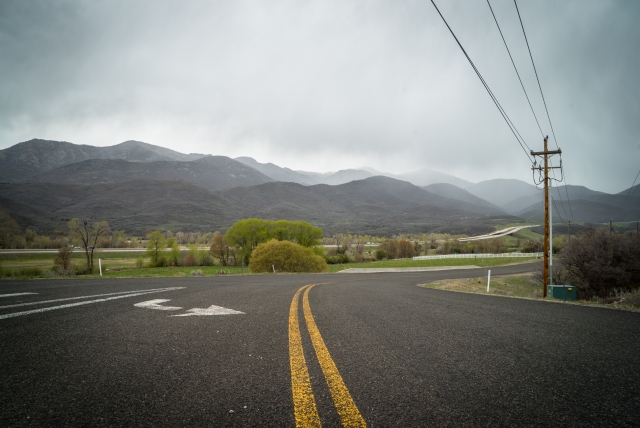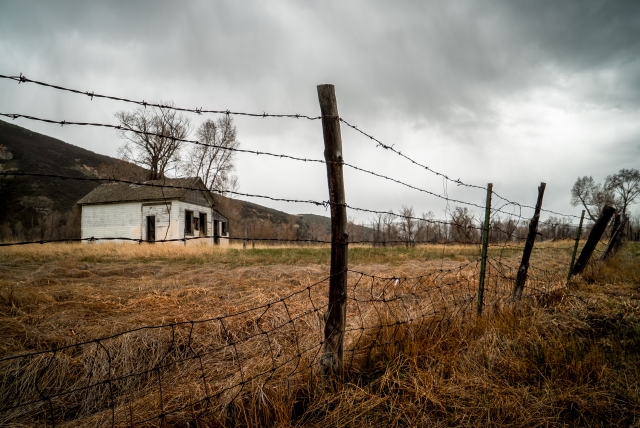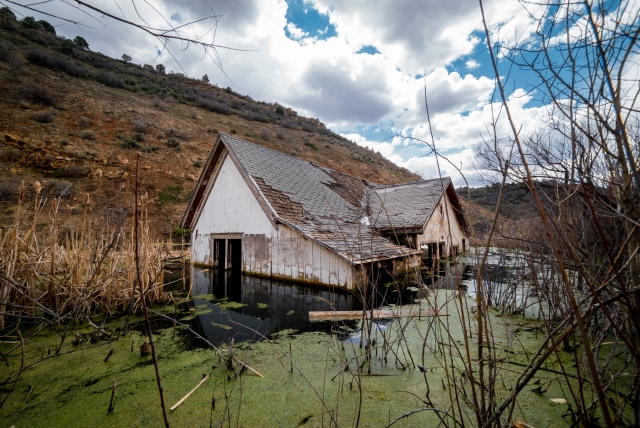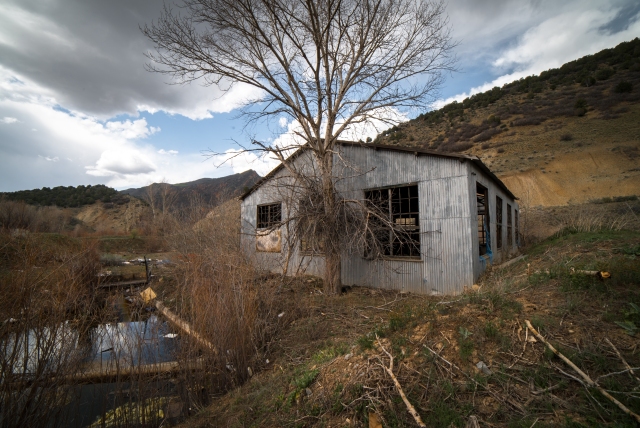
A Century-Old Ghost Town Wiped Out By A Massive Landslide
Located in the Spanish Fork Canyon – part of southeastern Utah County, Utah – sits one of the most interesting places I stumbled into along my journey to Oregon in 2015.

Often, when driving long distances, I’ll hop on and off the freeway at various points to find things I otherwise would have passed over. While passing through Utah, it seemed as though I was driving through practically the middle of nowhere, with not much in sight other than the beautiful landscape. I had been driving for some hours this day, when I eventually noticed a road that I could exit on. I decided this would be the perfect time to check out what Utah hides behind the twists and turns winding between its massive red rock landscape.

Thankfully, I couldn’t have picked a better place to leave the main stretch, as this exit dropped me practically directly into the town of Thistle – or what was left of it. At first, it appeared that I had found only a lonely stretch of road, but I needed to travel down this road to at least make a loop and take myself back to the main road. That’s when I stumbled into what remained of this ghost town.

Thistle was once a prosperous town, making their income by servicing trains for the Denver and Rio Grande Western Railroad. Unfortunately, the town would start a sharp decline once the switch to diesel locomotives was made.
Things would only get worse for the town, when in April 1983, a landslide dammed the Spanish Fork River, vausing 80,000,000 cubic meters of water to back up, eventually flooding the town. Thankfully, before the flood, the residents were evacuated. The massive flood destroyed the entire town of Thistle, leaving only (and barely) a few structures. This became one of the most costly landslides in United States history, with not only damages to the town, but affecting the economics of the entire region as well. Thistle had become the first presidentially declared disaster area in Utah.
For several months, U.S. Route 6, U.S. Route 89, and the railroad were closed while they rebuilt a higher alignment above the area.

Around 1848-1870, before Thistle had become an established town, the trade route where Thistle lies was used by Native American tribes. Two Ute chiefs, Taby and Peteetneet, led seasonal migrations through the canyon each spring and fall. The first recorded journey by Europeans to Thistle was the Dominguez-Escalante Expedition. They were escorted through the territory by Indian guides. Later, but still before the arrival of railroads, the town’s economy would be based mostly on farming and ranching. By this time, the Europeans had forced Utes to move from the area, as the Utes continued to clash with newcomers. By the 1870s, all Utes had moved from Thistle.
In 1878, Thistle was officially established, and the first tracks were laid through to service coal mines.

By 1917, Thistle peaked at about 600 residents. Work continued in Thistle through the 1950s, until the Denver and Rio Grande Western began to phase out steam locomotives. The town quickly shrank in population. The passenger depot was demolished in 1972, and the post office was closed by 1974. By 1983, only a handful of families remained in Thistle. When the flood waters rushed through the town in April of 1983, some had only about a 2 hours’ notice to gather any belongings that they wished to move with them to the town of Birsdeye, 5 miles south of Thistle. Volunteers helped as much as possible, though much was left behind as water reached homes quickly. By the 18th of April, the waterline had reached the rooftops of the 22 previously occupied homes. By the 19th, an entire mountain was moving at about two feet per hour, and US-6/US-89 was buried by 50 feet of soil.

You never know what’s hiding out of view, no matter how close to home it may be. I learned this when I started to find the numerous places near my hometown, amazed that they had sat quietly hidden for years. Some of these places, even locals will look at it and say ‘not sure how I never knew it was there.’ Well, you just have to look closely, carefully, with open eyes and all the time. Now, Thistle surely is not a town that in unknown, or even hidden. Yet, it is surely one that is not talked about often in travel blogs, or vacation guides.


Very often, I’m asked what gear I use for my photography, videography, etc. Questions ranging from what type of camera/cameras I use, what lenses I use, backpacks, memory cards, even what type of laptop I recommend, or what type of introductory camera I recommend…all that stuff, and more!
Well, of course I love to recommend camera gear or adventure gear that I trust and love, so at the end of each post I create here on my blog, I like to give a bit of a run-down on gear I use almost all the time!
So here it is! My entire (or most of it) list of photography/editing/adventure gear that I use.
My Camera (Sony a7riii) – https://amzn.to/2AFtzQv
Alternative Camera – https://amzn.to/2VHjR9h
Theta 360 Camera – https://amzn.to/2CaRwzm
Sandisk Memory Cards – https://amzn.to/2SN5sX6
Sony 16-35 4.0 – https://amzn.to/2HgLFhN
Zeiss 55 1.8 – https://amzn.to/2SK4Dys
Zeiss 85 1.8 Batis – https://amzn.to/2SNRQLm
Laowa 12mm 2.8 Zero-D – https://amzn.to/2AESLXD
My Favorite Backpack – https://amzn.to/2RKTi44
Tripod 1 – https://amzn.to/2SKxxON
Tripod 2 – https://amzn.to/2M2gUM6
MSI Laptop (great for editing, & much more) – https://amzn.to/2shGfZn






Memories are gone with the town.
Isa 26:14 They are dead, they shall not live; they are deceased, they shall not rise: therefore hast thou visited and destroyed them, and made all their memory to perish.
Love the image with the water going into the garage doors/ window? with the algae being offset by the scratches and graffiti – such good work Johnny!
Super interesting info too.
I love the still water in the photographs. You can tell it’s been there a long time, and it’s a wonderful contrast to your words – the story of rushing water.
Amazing what you can find on back roads.
Great pics and history.
And your gear list has sure come a long way, from your early days of using broken or borrowed cameras.
Quite a journey, both for you and for us. Thanks for following your passion.